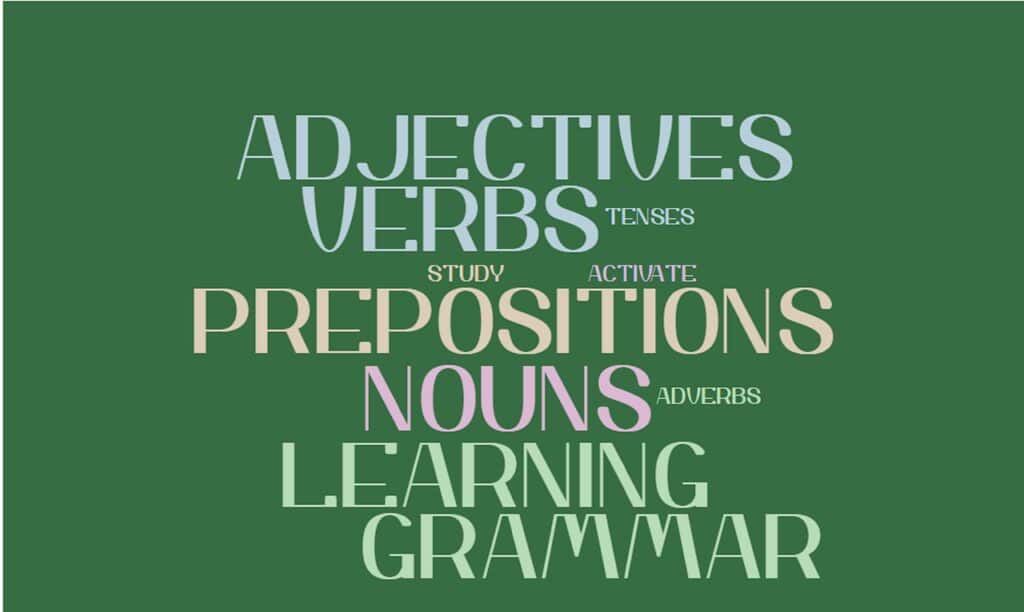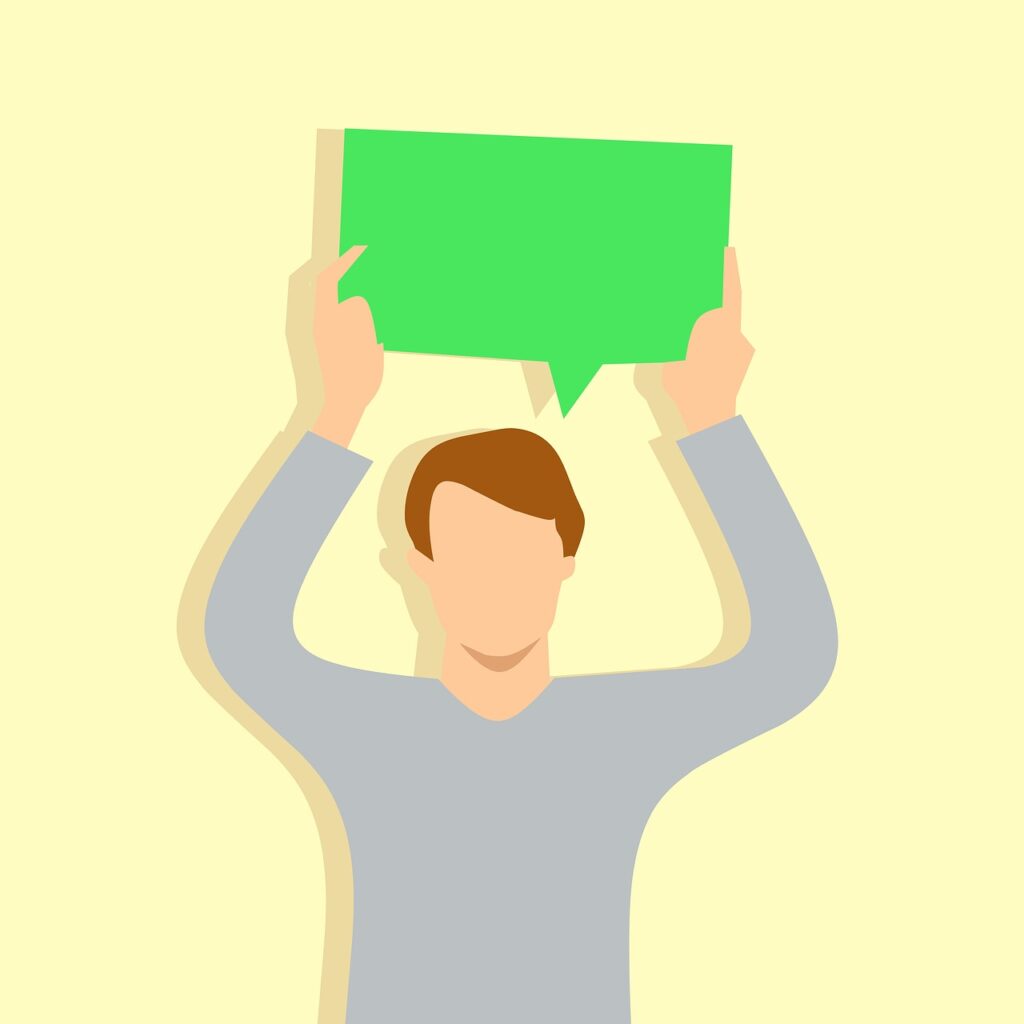The 8 parts of speech are the building blocks of language. They are the basic units of grammar that all words are made up of. In this blog post, we’ll take a look at each part of speech and give examples to help you understand their functions. We’ll also outline some general rules for how to use these parts of speech in your writing. So let’s get started!

The 8 Parts of Speech
Though there are eight parts of speech in English, not every word will fit neatly into one category. Some words can function as multiple parts of speech depending on how they’re used in a sentence. For example, the word “run” can be a verb or a noun. However, understanding the different parts of speech is a helpful way to understand how sentences are constructed.
Here are the following 8 parts of speech:
1. Nouns
Out of the eight parts of speech, the noun is probably the most important. After all, without nouns, we wouldn’t be able to talk about people, places, or things. Nouns are incredibly versatile words, and they can be used in a variety of ways. Here are some examples:
- Proper nouns are the names of specific people, places, or things. They always begin with a capital letter. Examples: George Washington, China, the Empire State Building.
- Common nouns are more general names for people, places, or things. They don’t need to be capitalized unless they appear at the beginning of a sentence. Examples: man, country, building.
- Collective nouns refer to groups of people or things. Examples: crowd, team, family.
Pronouns are words that take the place of nouns. Examples: he, she, it, them, their, ours. There are also possessive nouns, which show ownership or relationship; indefinite nouns (a/an/some); and compound nouns (two or more words that function as a single unit).
Rules About Nouns
Nouns are the foundation of every sentence. They are the subject, the direct object, and the indirect object. They show Possession or Attribute. And they express quantity or Quality. So, if you want to master the English language, you need to understand how to use nouns correctly. Here are eight important rules about nouns:
- A noun is a person, place, thing, or idea.
- A noun names something that can be seen or felt (concrete), or that can only be thought of (abstract).
- A noun can be singular (boy) or plural (boys).
- A singular noun names one person, place, thing, or idea; a plural noun names more than one.
- To make a singular noun plural, add s to most words: boy-boys; student-students; boat-boats
- To make a plural noun possessive, add ‘s to most words: boys’-boys’ toys; student’s-students’ desks; boats’-boats’ moorings
- Nouns can function as different parts of speech depending on their position in a sentence:
- as a Subject Noun doing the verb e.g., The man laughed heartily as an Object Noun being acted upon by the verb e.g., I met the President yesterday
- as a Possessive Noun showing ownership e.g., This is my friend’s pen
- as an Attribute Noun qualifying another noun e.g., He is a karate expert
Knowledge of these basic rules about nouns will enable you to communicate more accurately and effectively in English. So take some time to learn them well!

2. Pronouns
Pronouns are little words that stand in for other, bigger words. They help us avoid repeating ourselves and sounding like a broken record. “I” is a pronoun. So is “you” and “she.”
Pronouns come in all shapes and sizes. Some of them are one letter long, like “I” and “me.” Others are two letters long, like “he” and “him.” And there are even some pronouns that are three letters long, like “she” and “her.” Just to mix things up, some pronouns are four letters long, like “they” and “them.”
Pronouns can be tricky. Sometimes they can be singular, like “I,” “you,” and “she.” But other times they can be plural, like “we,” “they,” and “them.” Just to keep things interesting, some pronouns can be both singular and plural, like “you” and “they.” The best way to figure out whether a pronoun is singular or plural is to look at the word it’s replacing. If the word it’s replacing is singular, then the pronoun is probably singular too. If the word it’s replacing is plural, then the pronoun is probably plural too.
Rules about Pronouns
Pronouns are little words that stand in for big ideas. They save us from having to repeat the same nouns over and over again, which can get very boring very quickly. But even though they’re small, pronouns pack a mighty punch. In fact, there are eight different kinds of pronouns, each with its own set of rules. Let’s take a closer look at four of the most common types:
- Subject pronouns are used when the pronoun is the subject of a sentence, like “I,” “you,” “he,” “she,” or “it.” For example: I am going to the store. He is taller than me. They are going to be late.
- Object pronouns are used when the pronoun is the object of a sentence, like “me,” “you,” “him,” “her,” or “it.” For example: The teacher saw me in the hall. Give it to them. I don’t want to talk to him.
- Possessive pronouns show ownership, like “my,” “your,” “his,” “hers,” or “its.” For example: That book is mine. Is this your pencil? His car is parked in front of her house.
- Reflexive pronouns are used when the subject and object are the same, like “myself,” “yourself,” “himself,” “herself,” or “itself.” For example: I hurt myself when I fell down. You should wash yourself before dinner. The cat licked itself clean.
As you can see, there are some tricky rules when it comes to using pronouns correctly. But don’t worry – with a little practice, you’ll be using them like a pro in no time!
3. Verbs
Without verbs, there would be no sentences. Verbs are essential to communication, and they come in many different forms. There are action verbs, linking verbs, and helping verbs, to name a few. Each type of verb has a specific function, and they can be used in a variety of ways.
Action verbs are the most straightforward: they describe an action that is taking place. Linking verbs connect the subject of a sentence to another word or phrase. Helping verbs provide additional information about the action or state of being expressed by the main verb.
Verbs are powerful words, and they can be used to great effect in writing. By understanding the different types of verbs and how they work, you can use them to create stunning prose that packs a punch.
Rules About Verbs
Verbs are words that express action or state of being. In English, there are three verb tenses: past, present, and future. There are also four main verb forms: base form, -s form, -ing form, and -ed form. The rules about verbs can be confusing, but once you understand the basics, you’ll be able to use them correctly in your writing.
- The base form of a verb is the infinitive form, without the to. For example, the base form of “to walk” is “walk.”
- The -s form is used for third person singular present tense verbs. For example, “She walks to the store.”
- The -ing form is used for progressive verbs and gerunds. For example, “I am walking to the store.”
- The -ed form is used for regular past tense verbs. For example, “I walked to the store.”
- There are also irregular verbs, which don’t follow these rules. For example, the irregular verb “to be” has the forms “am,” “is,” and “are.” To conjugate an irregular verb, you’ll need to memorize the different forms.
With a little practice, you’ll be using verbs like a pro!

4. Adjectives
Adjectives are words that describe, modify or quantify other words, usually nouns and pronouns. There are eight main types of adjectives: articles, demonstrative, interrogative, indefinite, possessive, descriptive, quantitative and distributive.
- Articles are a type of adjective that is used to point out particular nouns (the indefinite article a/an) or to identify specific nouns (the definite article the).
- Demonstrative adjectives are used to point out which one or ones you’re talking about (“this book,” “these cookies”).
- Interrogative adjectives are used in questions (“Which movie do you want to see?” “What color is your car?”).
- Indefinite adjectives refer to some unspecified thing or group of things (“I have a few friends in town.” “Can you please pass me a pen?”).
- Possessive adjectives show who owns what (“That dog is mine!” “Whose coat is this?”).
- Descriptive adjectives describe characteristics of people or things (“She’s a beautiful girl.” “It’s a horrible smell.”).
- Quantitative adjectives describe how much or how many (“We have a lot of food.” “I have five siblings.”).
- Distributive adjectives describe groups of people or things, emphasizing each individual item in the group (“Each student must hand in their homework individually.” “The store was giving away free samples”).
As you can see, many different types of adjectives serve many different purposes. The next time you’re writing, be sure to choose the right adjective to convey exactly what you mean.
Rules About Adjectives
Adjectives modify, describe, identify and quantify people or things and their characteristics. Here some things that you should be familiar with adjectives:
1. Adjectives usually go in front of the noun or pronoun that they modify. For example:
- That’s a really interesting book.
2. They often follow linking verbs. For example:
- The soup smells delicious.
- The room looks messy.
3. Adjectives do not normally go after the verb “to be”. For example:
- It is cold outside.
- He is angry about the situation. (Although some style guides allow short adjectives after “to be.”)
4. When two or more adjectives precede a noun, they are usually separated by a comma. For example:
- We had a really great time at the party last night.
5. Notice that we don’t use a comma when the adjectives are integrated into the sentence as one unit modify the noun. For example:
- He’s a big strong guy. (Here big and strong work together to describe one quality.)
6. We sometimes use an adverb instead of an adjective. For example:
- It’s freezing cold outside.
- That was an extremely silly thing to do!
As you can see, there are lots of rules governing the use of adjectives, but once you get the hang of it, using them correctly will become second nature. And your writing will be all the richer for it.
5. Adverbs
Most people know that there are eight parts of speech. They include nouns, verbs, adjectives, adverbs, prepositions, conjunctions, and interjections. Adverbs are probably the most misunderstood part of speech. They are words that modify verbs, adjectives, and other adverbs.
- For example, the word “slowly” is an adverb that modifies the verb “walk.”
The word “very” is an adverb that modifies the adjective “slow.” And the word “moderately” is an adverb that modifies the adverb “slowly.” Adverbs can be used to express manner, degree, frequency, or time.
- For example, you could say “I slowly walk to class” to express manner.
You could say “I am very slow” to express degree. You could say “I moderately walk to class” to express frequency. Or you could say “I will slowly walk to class tomorrow” to express time. Adverbs are a versatile part of speech, and they can be used in a variety of ways to make your writing more precise and effective.
Rule About Adverbs
Adverbs are one of the eight parts of speech. They modify verbs, adjectives, and other adverbs. Adverbs usually tell how, when, where, how often, or how much. Most adverbs are created by adding -ly to an adjective, as in quickly, softly, and impatiently. However, many words and phrases that function as adverbs do not end in -ly.
- For example: now, here, together, yesterday.
Adverbs that don’t end in -ly are called flat adverbs. Many common flat adverbs are made up of more than one word: all together, just a minute, so far. Some adverbs can be used both ways: slow (adjective) / slowly (adverb), hard (adjective) / hard (adverb).
When an adjective is used as an adverb, it doesn’t change form.
- For example: He drives slow(adj). OR He drives slowly(adv).
Pay close attention to the spelling of Words that have more than one meaning.
- For example: the noun lead can mean a metal (He sells lead pipes.), but the verb lead can mean to guide (She leads them through the garden.).
When writing, be sure to use the correct form of the word. In summary, there are three main rules to remember about adverbs:
- Most adverbs are created by adding -ly to an adjective;
- Many words and phrases that function as adverbs do not end in -ly; and
- When an adjective is used as an adverb, it doesn’t change form.
By understanding and following these rules, you can ensure that you are using adverbs correctly in your writing.
6. Prepositions
A preposition is a word (often a short word) that sits before a noun to show the relationship between that noun and another word in the sentence.
You’re probably familiar with some of the most common prepositions: on, at, to, from, by, under, over. Once you understand how prepositions work, you can use them correctly in your writing without even thinking about it. Just like you learned the difference between “your” and “you’re,” using the right preposition will come naturally.
Prepositions are often small words, but they are very important in English. They are used to describe position and movement, time and date, direction, and more. Prepositions usually come before a noun or pronoun (I’m going to school), but they can also come after verbs (He arrived yesterday). There are only a few prepositions in English (about, above, across, against, along, among, around, at, before, behind, below, beneath, beside, between, beyond, by for, from, in, into, like nor of off on onto or out over past since through till to toward under underneath until up upon with within without ), but we use them very often.
If you’re not sure whether to use a preposition or not, try this little trick: if you can replace the word with “in,” “on,” or “at” and the sentence still makes sense, then you probably need a preposition.
Rule About Prepositions
Prepositions are words that indicate location or direction. They can be used to describe where something is about something else. For example, you might say “The book is on the table.” Prepositions can also be used to describe movement. For example, you might say “I’m going to the store.” There are a few simple rules to remember when using prepositions.
- A preposition must be followed by a noun or pronoun.
- A preposition can never be used alone; it must always be part of a larger phrase.
- Prepositions are not typically used at the end of a sentence.
If you remember these simple rules, you’ll be well on your way to using prepositions correctly in your writing.
7. Conjunctions
Conjunctions are words that join other words, phrases, or clauses together. There are three main types of conjunctions: coordinating conjunction, subordinating conjunction, and correlative conjunction.
- Coordinating conjunction connect equal grammatical units, such as two independent clauses, two adjectives, or two nouns.
- Subordinating conjunction connects unequal grammatical units, such as an independent clause and a dependent clause.
- Correlative conjunction work in pairs to connect grammatical units of equal weight, such as two adjectives or two verb phrases.
While conjunctions are not the most exciting part of grammar, they play an important role in shaping our sentences and making our writing more understandable.
Conjunctions are words that join other words, phrases, or clauses together. For example, the word “and” can join two phrases:
- “I’m going to the store” and “I’ll pick up some milk.”
The word “or” can join two clauses: “I’m going to bed” or “I’m going to stay up and watch TV.”
There are also many other types of conjunctions, such as “but,” “yet,” “so,” and “because.” Each type of conjunction has a different function, but all of them serve to connect parts of a sentence together.
In addition to joining words and phrases together, conjunctions can also be used to contrast two ideas or express a cause and effect.
- For example, you could say “I’m going to bed early tonight because I have an early meeting tomorrow.”
As you can see, conjunctions are a versatile part of speech that can be used in a variety of ways.
Rule About Conjunctions
An important rule about conjunctions is that they must be used to connect two independent clauses.
- An independent clause is a group of words that contains both a subject and a verb and can stand alone as a complete sentence.
- A dependent clause, on the other hand, is a group of words that has either a missing subject or verb and cannot stand alone as a complete sentence.
In order to use conjunction correctly, you must connect two independent clauses. If you try to connect a dependent clause with an independent clause, it will create a run-on sentence. When using conjunctions, remember to use them sparingly to avoid choppy writing.
Choose your words carefully and make sure that each conjunction serves a purpose in helping to advance your argument.
8. Interjections
We all know the eight parts of speech: nouns, verbs, adjectives, adverbs, prepositions, conjunctions, and interjections. But what exactly is an interjection? An interjection is a word or phrase that expresses surprise, excitement, or emotion. It can be used to show strong feelings or to grab attention.
Interjections are often followed by exclamation points. Some common interjections include “Wow!,” “Ouch!,” “Hey!,” “Great!,” and “Congratulations!”
While they might not be the most formal part of speech, interjections can be a lot of fun to use. They can liven up a conversation and add color to your writing. So next time you want to express yourself, don’t be afraid to let loose with an interjection or two.
Rule About Interjections
Interjections are words that express emotion or surprise. They can be used to show excitement, approval, or disbelief. Interjections are usually followed by an exclamation point.
- Examples of interjections include “Wow!” “Ouch!” “Hey!” and “Hmm.”
While there are no hard-and-fast rules about when to use an interjection, there are a few general guidelines. These are:
- Interjections should be used sparingly. Overusing them can make your writing seem overly dramatic or childish.
- It’s important to choose an interjection that accurately reflects your feelings. Using an interjection that doesn’t match the tone of your writing can come across as forced or insincere.
With these considerations in mind, using an interjection can be a great Conclusion
Knowing the 8 parts of speech is important because they help us understand how to use language correctly. By understanding the different parts of speech, we can create more meaningful and accurate sentences. Additionally, knowing the rules that govern how each part of speech works helps us to avoid making mistakes when writing or speaking. In short, learning about the 8 parts of speech will make you a better writer and speaker! A noun is a word that represents a person, place, thing, or idea. Nouns can be concrete or abstract. A pronoun is a word that represents a noun or another pronoun. Pronouns can be personal (I, you, he, she, it), reflexive (myself, yourself, himself, herself), or demonstrative (this, that). An adjective is a word that describes a noun or pronoun. Adjectives can be descriptive (big, blue) or limiting (only one). An adverb is a word that describes a verb, adjective or other adverb. Adverbs can be modifying (very, quite) or intensifying (extremely). A preposition is a word that shows the relationship between two elements in a sentence. Common prepositions include in, on and under. A conjunction is a word that links two clauses or phrases together. Conjunctions typically include and and but. An interjection is an exclamation that expresses emotion. Interjections can be used to show excitement (wow), anger (oh no), or sadness (awww).FAQs
What is a noun?
What is a pronoun?
What is an adjective?
What is an adverb?
What is a preposition?
What is a conjunction?
What is an interjection?





